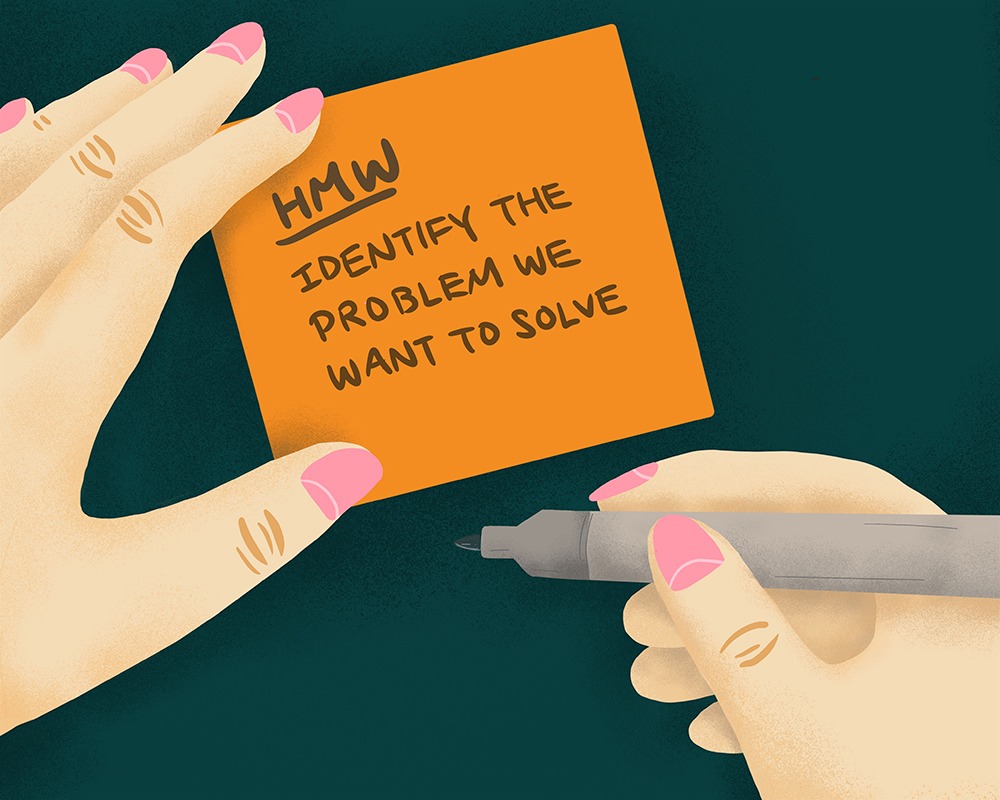In a small team of five, you quickly get to know everyone and their working styles here at Railyard, and I’ve come clean really early on. I don’t like ambiguity. So you can only imagine my reaction when we were told that we would have a conversation on different levels of abstraction with David Dunne. Obviously not great, I mean what the hell is going on? I’m a designer, not a philosopher.
As we moved through his workshop, I actually found myself inspired and engaged as he effectively walked us through the Design Thinking process. According to David, there are three core phases in this journey:

Problem Framing
The first phase focuses on exploring different frames and identifying the problem we want to solve. He described “good” problem framing as having the “right” abstraction and ambition level with consideration of biases and point of views. Meaning that the question should be narrow enough so we know where to start brainstorming, but also broad enough so we have room to explore ideas.
Question the problem, which one are you going to solve?
Understanding User Experience
The second phase is all about the users. It is important for us designers to empathize with the people we are designing for. Specifically, we need to try to understand the context surrounding the use of existing product and why they work or don’t work.
Prototyping (Making and Testing Solutions)
The third phase involves prototyping. By creating a tangible form for the problem, we gain further understanding of the user’s experience and underlying problems/challenges at hand. In a way, it is a chance for us to put our theories to work and gather insights from poking holes into a potential solution to generate a more suitable solution.
With those ideas in mind, we were then put to work right away to generate “how might we” questions of different abstraction levels for one of our projects. At this point, I was freaking out a little as I’ve always had trouble thinking in a more abstract level and wasn’t comfortable with ambiguity and such. Right before my brain started to shutdown due to frustration, David introduced the concept of abstraction ladder (more generally known as the Why-How ladder) which made so much sense and saved me from a mental-meltdown crisis.
We started the process by placing the HMW question at the middle of a theoretical ladder. Above us sits the question of “Why?” and below us sits the question of “How?”. Above (why) is the more abstract and generalized idea of the problem and below us (how) sits the more concrete idea of what needs to be done. This exercise really helps practical thinkers like me to delve into higher level thinking as well as to think outside the box.
Through the workshop, I realized that design thinking is about problem finding more than problem solving, and problem framing is such a crucial part of the discovery process. Finding the right problem to solve not only makes the design process more efficient but also ensures that the solutions we come up with are relevant.
Design thinking is a process: a collection of things that you do to innovate.
I’ve always imagined the Design Thinking process as a linear process much like the scientific method used in research. Through this workshop I learned however that it is not the case. Design thinking is not a linear exercise in which one step neatly follows another, nor is it circular. It is more of a back-and-forth process where one might go from analysis to prototype and back to analysis, then on to gathering insights and data again.. and so on. To us designers, where we start doesn’t really matter. Just like the story about Hoogendoorn’s back and forth development of the stormproof umbrella, design is about exploration.
–––
Written by Mica Pfeffer for the Railyard Lab blog.
